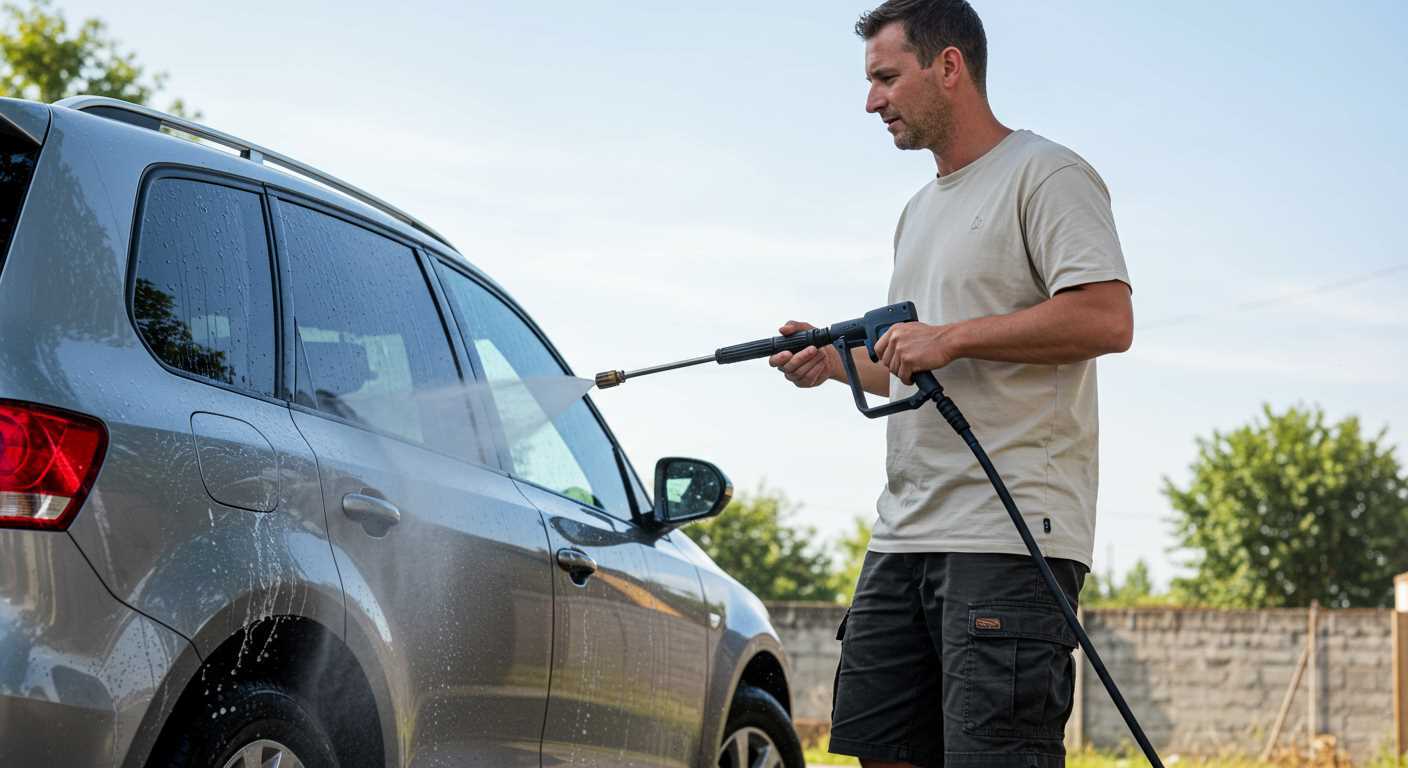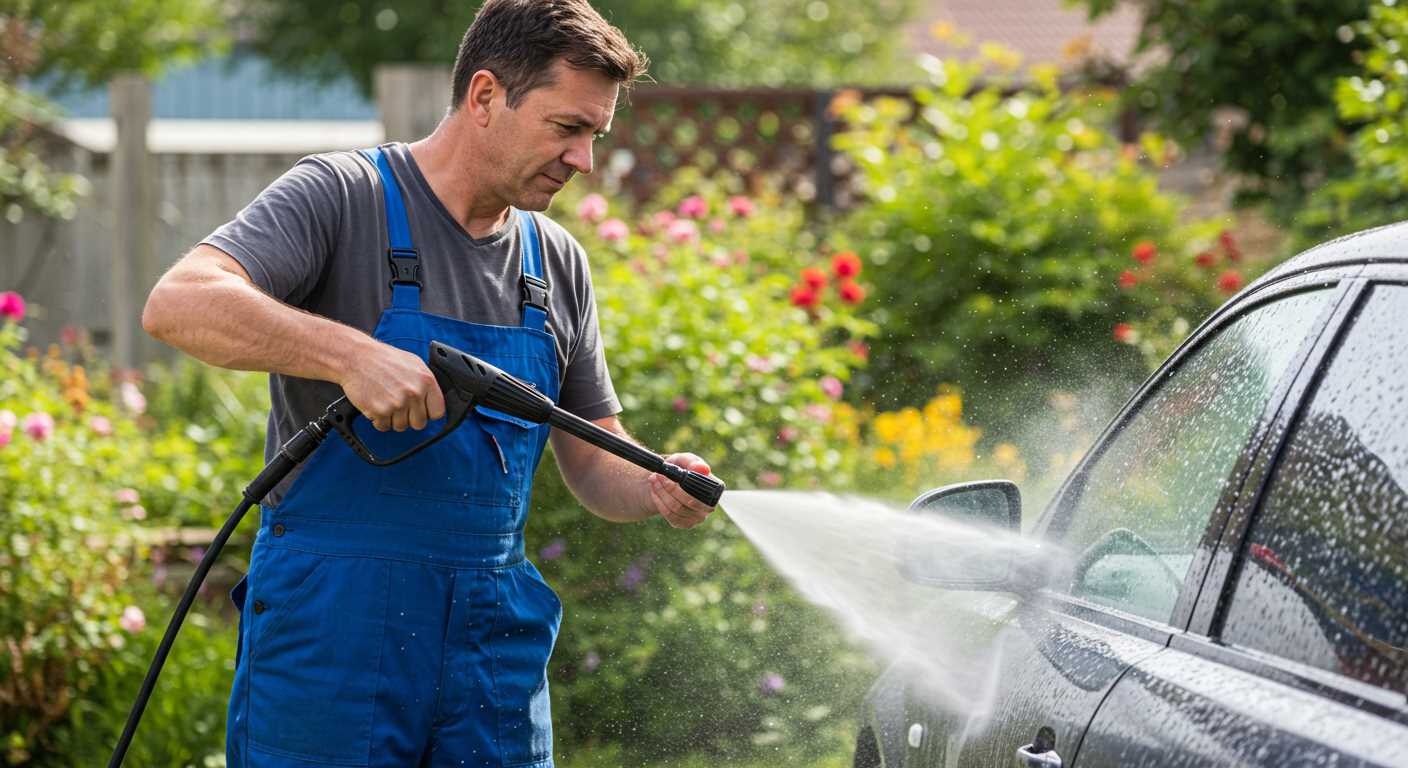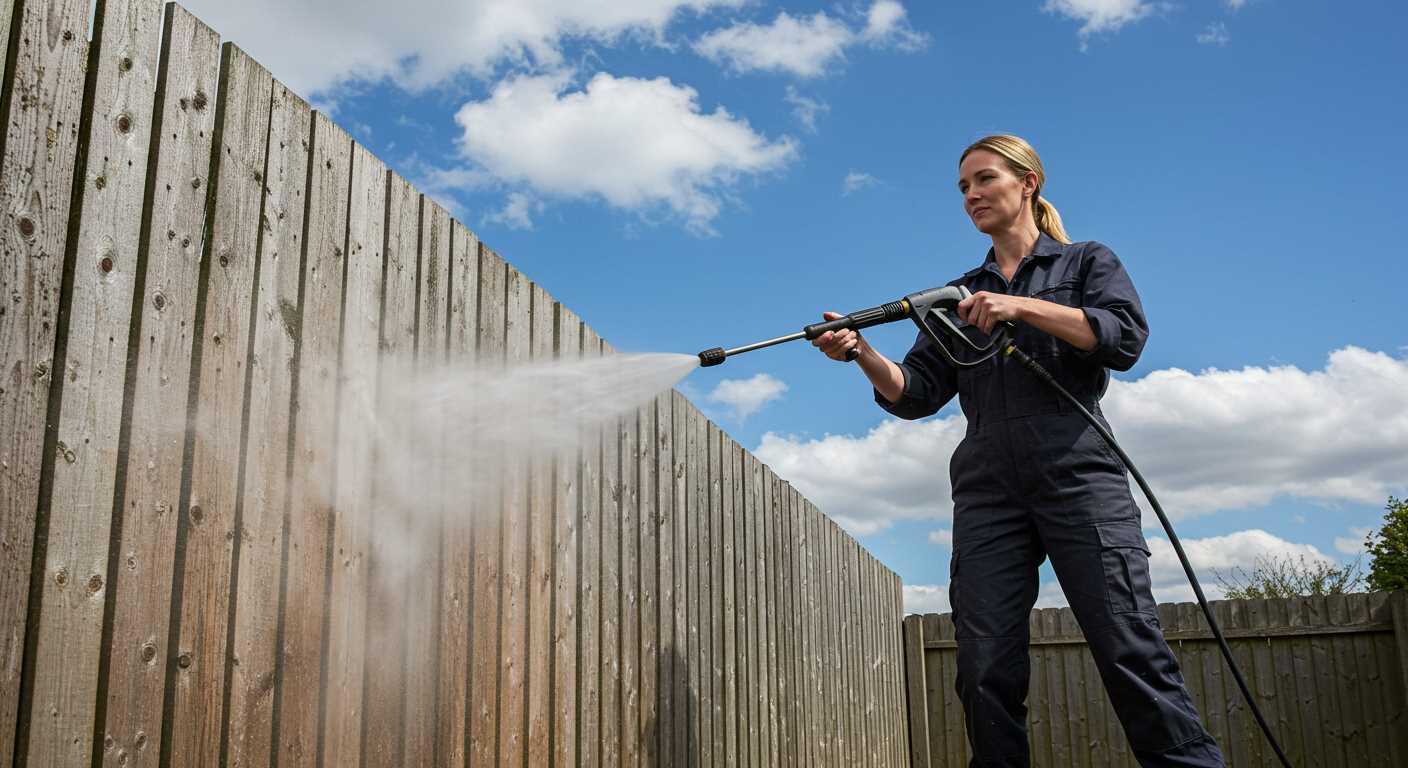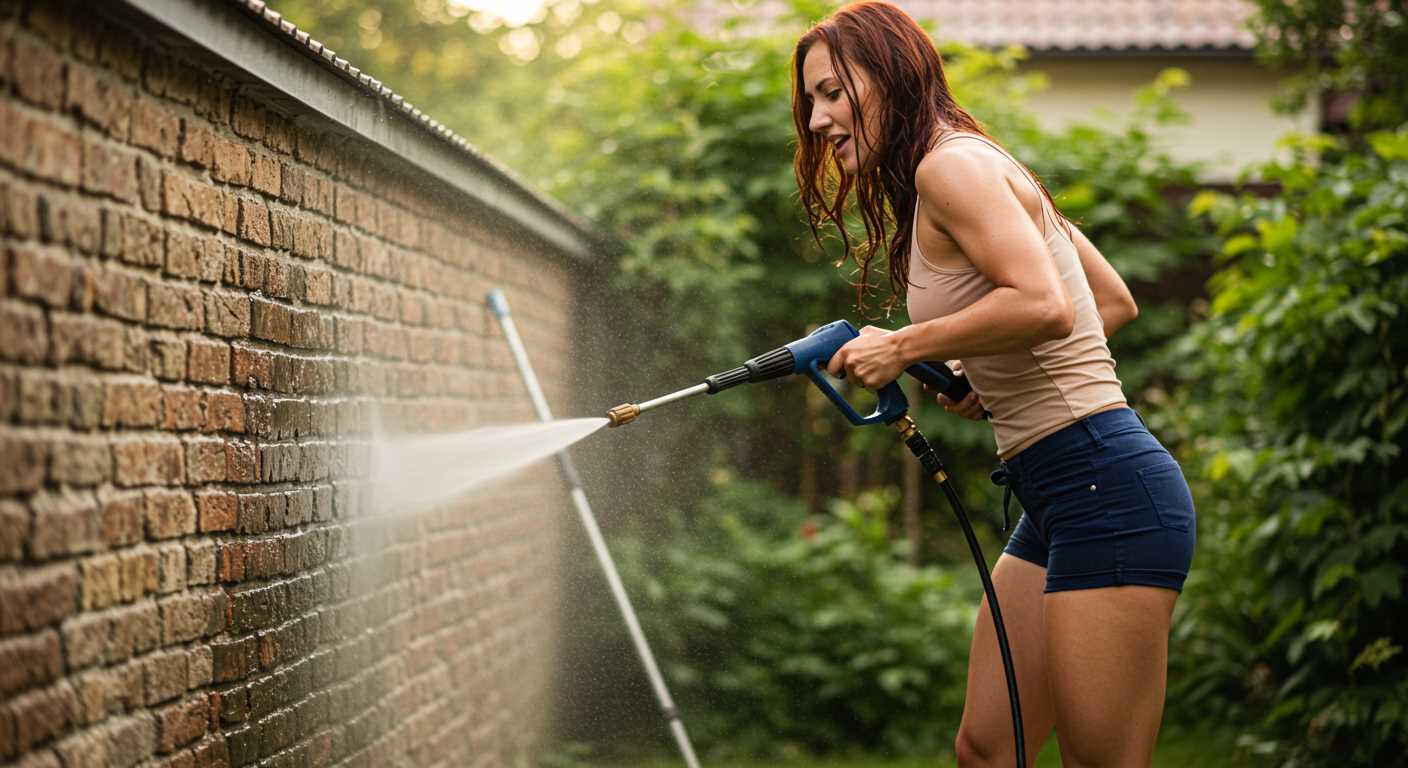




Using a container as a water source for a high-pressure cleaner is indeed feasible, but there are nuances to consider. I’ve experimented with this setup on multiple occasions, and while it can save you from dragging hoses around, it also comes with potential limitations. The key lies in ensuring the water intake can keep up with the machine’s demands.
First, check the specifications of your unit. Many models require a minimum water flow rate to function optimally. If the bucket doesn’t provide enough water, you could face issues like reduced pressure or overheating. I once tried this method with a popular model, and while it worked for a short time, the performance dropped significantly as the bucket drained.
Another important aspect is the height of the container. Gravity plays a role in how efficiently water is pulled into the system. Placing the bucket on a platform or stand can help maintain a steady flow. I learned this the hard way, when a low-lying bucket led to inconsistent performance and frequent interruptions.
If you’re set on this approach, consider investing in a submersible pump. This device can help draw water more effectively from your container, ensuring a steady supply. It made a noticeable difference in my experience, turning a cumbersome task into a manageable one.
Understanding the Mechanics of High-Pressure Cleaners
High-pressure cleaning devices operate on a straightforward principle: they convert regular water flow into a powerful jet through a pump mechanism. The heart of these systems is the pump itself, which pressurises the water and expels it through a narrow nozzle, creating a high-velocity stream.
In my experience, the type of pump significantly influences the performance. There are two main types: axial pumps and triplex pumps. Axial pumps are typically found in entry-level models, offering decent performance for light tasks. Triplex pumps, on the other hand, are more robust, designed for heavy-duty applications, providing consistent pressure and durability.
Water source plays a crucial role in functionality. High-pressure cleaning devices are generally designed to draw from a stable supply, usually a garden hose connected directly to a tap. When sourcing from a container, there are specific challenges. The intake must be submerged, and the device must be able to create a vacuum to pull water from that source. Many models struggle with this, leading to potential overheating or damage.
In my years of testing various models, I’ve observed that those equipped with a self-priming feature can handle alternate water sources more effectively. This allows for flexibility in where one can draw water. However, it’s vital to check the manufacturer’s specifications before considering such a setup.
Another aspect to consider is the nozzle size. Smaller nozzles increase pressure but reduce flow rate, while larger nozzles provide a broader spray with less intensity. The right choice depends on the cleaning task at hand. For example, stubborn grime requires a narrower jet, while larger areas benefit from a wider spray.
| Component | Function |
|---|---|
| Pump | Pressurises water for high-velocity output |
| Nozzle | Determines spray pattern and intensity |
| Motor | Powers the pump and other components |
| Hose | Transports pressurised water to the nozzle |
Maintenance is another key factor that can’t be overlooked. Regularly checking the water filter, ensuring the hoses are clear of kinks, and inspecting seals and connections will prolong the life of the equipment. I’ve seen too many units fail prematurely due to neglect in these areas.
Understanding these mechanics not only enhances the cleaning experience but also ensures that the equipment lasts longer, providing reliable service for various tasks. Each component plays a vital role, and attention to detail can make all the difference in achieving optimal results.
Requirements for Gravity-Fed Water Supply

To ensure optimal functioning of your cleaning device using a gravity-fed system, you must adhere to certain specifications. First and foremost, the water source should be elevated at least 2-3 feet above the inlet of your unit. This height generates sufficient gravitational force to maintain a steady flow.
Water Flow Rate
A minimum flow rate of 2 gallons per minute (GPM) is crucial. If the supply falls short, you may encounter issues with pressure consistency. Consider using a larger container or a reservoir that can accommodate this requirement. Regularly check for blockages in hoses, as they can significantly impede flow.
Quality of Water
It’s wise to use clean, filtered water. Contaminants can lead to clogs and damage internal components. If you’re unsure about the water quality, a basic filtration system will go a long way in protecting your equipment. Additionally, avoid using water with high mineral content, as this can cause scale buildup over time.
When setting up your system, ensure all connections are secure to prevent leaks. A well-maintained setup not only prolongs the life of your device but also enhances performance. For anyone interested in capturing the moment while using cleaning equipment, a digital camera come with picture fix can be a handy addition.
Choosing the Right Type of Pressure Cleaner
For anyone considering a cleaning device, selecting the appropriate model is crucial. My years in the industry taught me that the choice often boils down to three main types: electric, petrol, and battery-operated. Each has its own advantages depending on the intended use.
Electric Models
Perfect for light to medium tasks, electric devices are ideal for home use. They are quieter, lighter, and generally easier to manoeuvre. If you’re tackling patios or cars, these models can deliver sufficient power without the noise pollution of their petrol counterparts. I remember helping a neighbour clean his driveway; we used an electric unit, and it performed admirably. Just ensure you have access to a power outlet.
Petrol Units
For more intensive jobs, petrol-driven machines excel. They provide higher pressure and longer runtime, making them suitable for large areas or tough grime. During a landscaping project, I relied on a petrol model to clean heavy machinery; it was a game changer. The downside is the noise and maintenance requirements, but for demanding tasks, they are often worth the trade-off.
Battery-operated cleaners offer flexibility and portability, perfect for quick jobs where access to power isn’t feasible. However, their pressure and runtime can be limited, so they suit smaller, less demanding tasks best. I once used a battery model at a family picnic to clean up spills; it was convenient and efficient for that setting.
Evaluate your needs carefully. The right choice can save you time and effort, ensuring your cleaning tasks are completed effectively.
Setting up a bucket system for water supply
For an effective water supply from a container, consider the following steps for optimal setup:
Container Choice and Placement
- Select a sturdy bucket or tank that can hold sufficient liquid for your task.
- Position the container on a stable, elevated surface to utilise gravity for water flow.
- Ensure the base is level to prevent spills or tipping.
Connecting the Hose
- Use a quality garden hose with a diameter compatible with your device’s inlet.
- Attach a filter to the hose to prevent debris from entering the system.
- Ensure all connections are tight to avoid leaks–consider using Teflon tape on threaded connections.
Remember to check the water level frequently. When you’re ready to clean, it’s wise to use a suitable car wash liquid for pressure washer to achieve the best results. This not only enhances cleaning efficiency but also protects the surfaces being treated.
Lastly, always monitor the water flow while in use to prevent running the system dry, which can lead to damage. This setup can be a reliable alternative for power cleaning when standard sources are unavailable.
Potential challenges with water intake from a bucket
One major issue I encountered during my testing involved the height of the water source. If the container isn’t elevated properly, the flow can become sluggish, leading to inconsistent performance. I’ve tried various setups, and I always found that raising the bucket significantly improves the water flow. A simple platform or stand can do wonders.
Another challenge is ensuring a secure and airtight connection between the hose and the water source. A loose fitting can cause air to enter the line, which disrupts the suction needed for optimal operation. I recommend using high-quality connectors and clamps to prevent leaks. During my trials, I had a few frustrating moments where inadequate seals led to air pockets, resulting in poor output.
Debris in the water source can also be problematic. Small particles can clog filters and hoses, affecting overall functionality. I’ve learned to always inspect the water before use. A simple filtration system can help keep contaminants at bay. In one instance, I neglected this step, and it resulted in a clogged hose that halted my work mid-project.
Temperature of the water is another factor to consider. Cold water may not provide the same cleaning efficacy as warm water, especially when dealing with tough stains. I’ve found that a heated water source can enhance performance significantly, so if it’s feasible, consider using warm water for better results.
Lastly, the volume of water in the container can quickly become a limitation. Extended usage requires frequent refills. I’ve set up larger containers in the past to mitigate this issue. A larger reservoir ensures a longer working period without interruptions, which is especially beneficial for extensive cleaning tasks.
Testing the performance of the cleaning unit using water from a container
Using a container for water supply can be a practical solution in certain situations. In my experience, I’ve discovered that the performance of these units can vary based on several factors. First, the height of the container plays a significant role. When the water source is elevated, gravity assists in maintaining a steady flow, which is crucial for optimal operation. I’ve observed that a height of at least 1 metre often suffices to ensure consistent water delivery.
Another critical aspect is the diameter of the hose used to connect the container to the machine. A wider hose allows for a greater volume of water to flow, reducing the risk of the unit drawing air, which can lead to performance issues. In one instance, I used a standard garden hose with a diameter of 1 inch, and the results were markedly better than with a narrower option.
While testing, I noticed that the water temperature also affects the cleaning efficiency. Cooler water tends to work well for general cleaning tasks, but for grease or oil stains, warmer water can enhance the cleaning action. I’ve had success by preheating the water slightly before use, especially when tackling tough jobs.
It’s also important to monitor the water level in the container. Running the device when the container is nearly empty can cause air intake, leading to operational issues. I recommend keeping an eye on the water level or using a larger container to extend the run time without interruptions.
Lastly, the type of nozzle used can influence the effectiveness of the cleaning process. I’ve found that adjustable nozzles provide versatility, allowing one to switch between different spray patterns depending on the job at hand. This adaptability can compensate for any fluctuations in water supply and ensure that cleaning tasks are completed efficiently.
Alternative water supply options for pressure cleaners
Using a bucket isn’t the only option for sourcing water for these machines. I’ve experimented with various methods that can enhance functionality while being cost-effective. One such alternative is connecting to a rainwater collection system. This method utilises stored rainwater, which is not only eco-friendly but also saves on water bills. Ensure the tank is equipped with a filtration system to prevent debris from clogging the intake.
Another approach involves utilising a garden hose connected to a nearby water source. If the water pressure is adequate, this can provide a steady supply without the need for a reservoir. I once used this setup during an outdoor event, and it worked seamlessly, allowing me to clean multiple surfaces without interruption.
In instances where outdoor connections aren’t available, consider using a portable water tank. These are particularly useful for mobile cleaning tasks. I remember a time when I had to clean a fleet of vehicles at a remote location. A 50-gallon tank filled with water ensured I had enough supply for the job without needing a direct water source.
Utilising a submersible pump can also be beneficial. By placing this pump in a larger container, you can easily draw water as needed. I’ve had success with this method when cleaning large areas, as it allows for continuous operation without frequent refills.
When exploring these alternatives, always check the specifications of your equipment to ensure compatibility. For instance, ensure that the flow rate from your chosen water source meets the requirements for optimal performance. This attention to detail can prevent frustrating downtime and enhance the overall cleaning experience.




.jpg)


